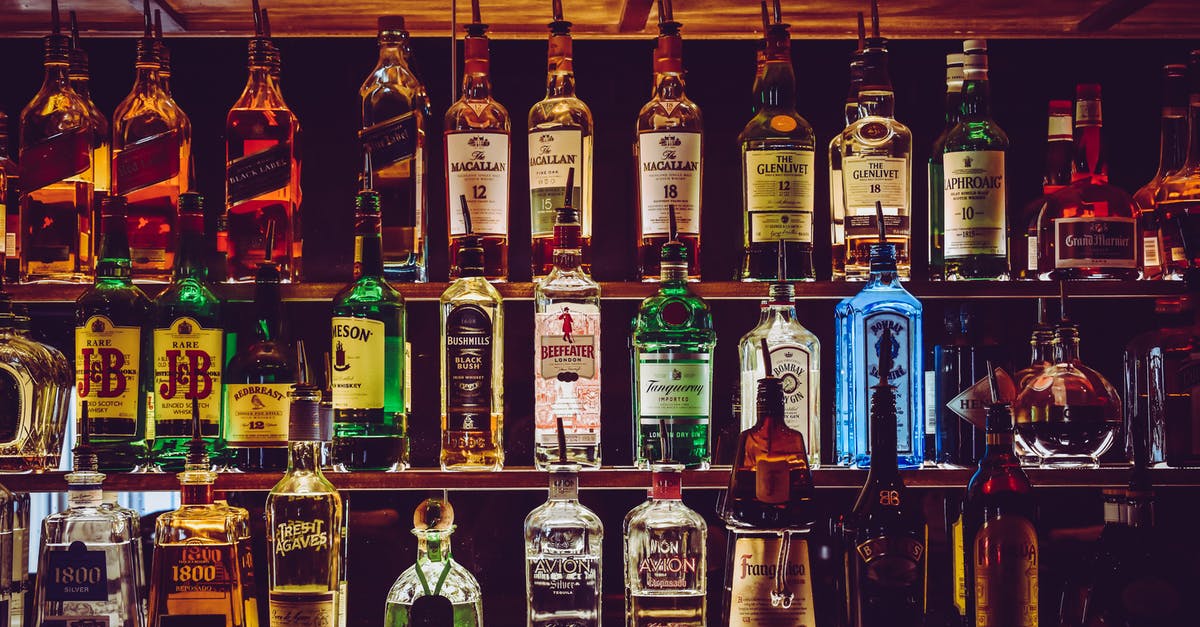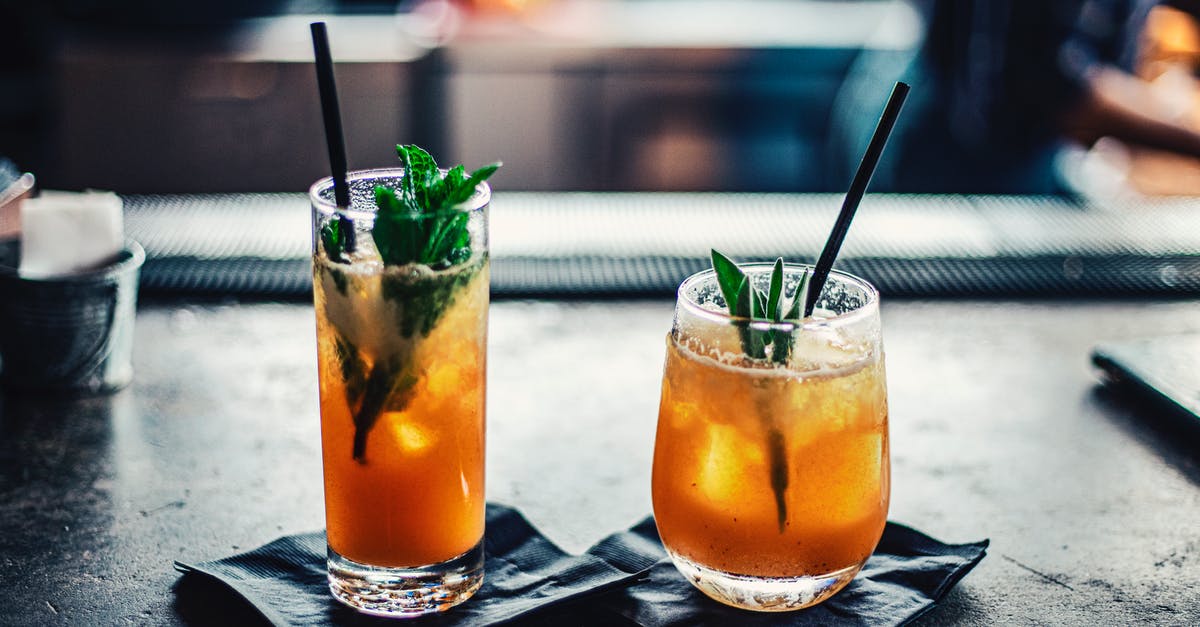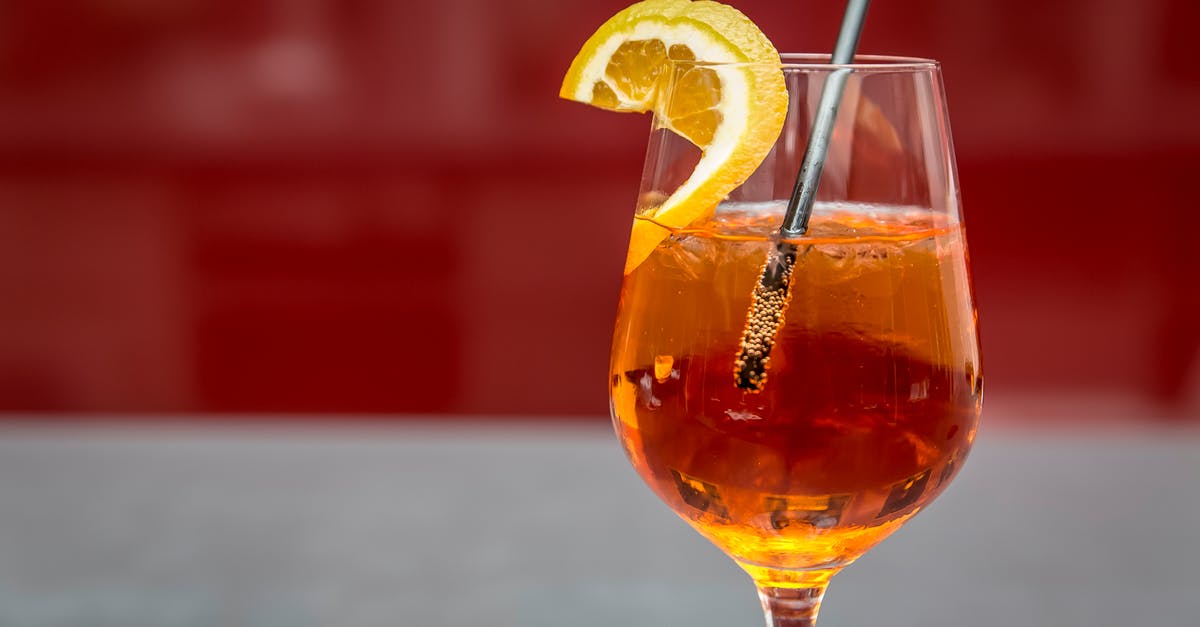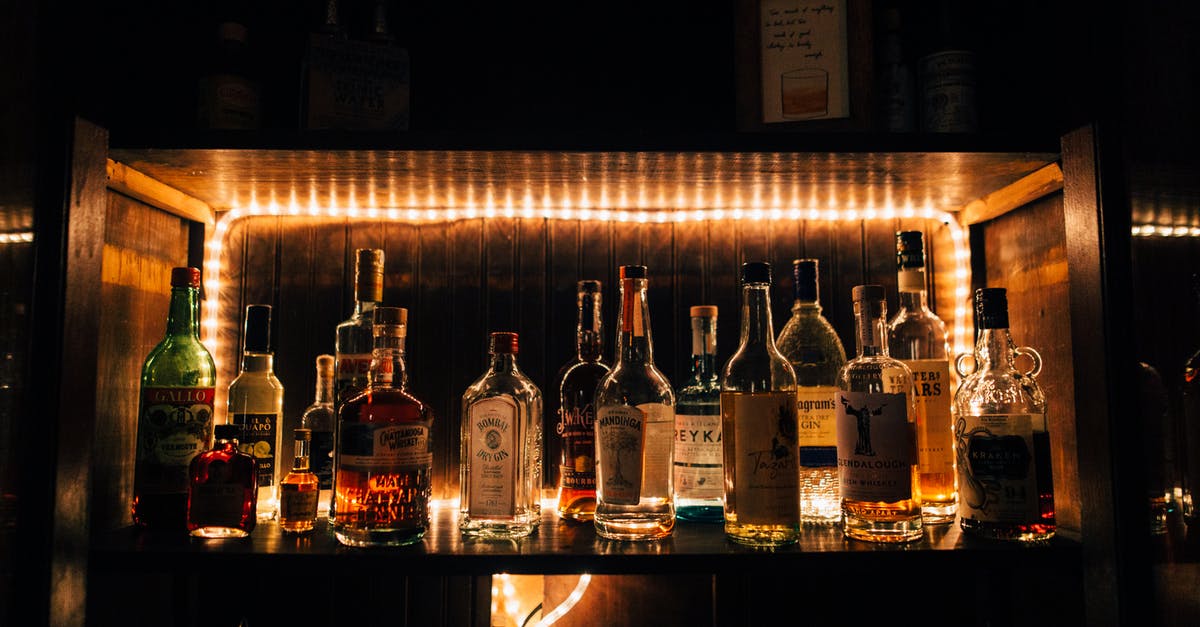Keep alcohol in spiced rum reduction?

I'm working on a new recipe and want to make a spiced rum reduction without losing the alcohol. Don't just want it thicker or I'd use xanthum gum I want less liquid with stronger flavor and the alcohol content to still be as high as possible. Thought about reducing it in a covered pot at extremely low temp to condensate the alcohol back into it but not sure how it would work out because the water would condensate back into it as well. Any thoughts I'm racking my brain here lol.
Best Answer
You can do something based on freeze-concentrating:
- Partially freeze it until ice crystals form
- Strain the ice off.
- The liquid will contain much of the alcohol and alcohol-soluble flavour compounds, along with some water.
- The ice will be mainly water with water-soluble flavour compounds and sugars. There will be alcohol in it, which will be lost.
- Up to now this is just freeze distillation (more properly called fractional freezing).
- Melt the ice and reduce it as much as possible.
- Recombine with the alcoholic liquid.
I've tested some of the process, with some success.
In the following, all temperatures were measured with a very cheap IR (infrared) thermometer; they're probably fairly consistent on the same materials, but not very accurate (as these thermometers make assumptions about the emissivity of the sample.
I froze a small plastic container of about 50ml of rum: 40% ABV, "Negrita" brand (French), that's been on my shelf for years. With the freezer turned up to maximum and left closed overnight, the coils, on which the rum was sitting, were down to -36°C. The rum was frozen into slush rather than solid. This is more than cold enough to freeze 40% ABV according to this table of freezing points. Starting from anything but the weakest rum you'll need quite a cold freezer or to be in contact with the coils. The rum was warming rather fast after I got it out of the freezer, so I didn't get a temperature measurement before straining it. I put it in a tea strainer to drip and collected about the first half (estimated, nearer 2/3 in the end) in one glass (sample 1), before letting the rest melt in another glass (sample 2). Sample 1 was darker in colour and smelt more strongly of rum.
Then I tried to test the flash point. Both samples, and a sample taken directly from the bottle (sample 3), were warmed in a water bath, before I tried to ignite some on a teaspoon (which had also been warmed in the same bath and dried). Below 24°C nothing much happened. At 24°C a flame followed my lighter flame around the teaspoon without ever really catching, on sample 1 only. At 28°C I saw the same behaviour, also on sample 3.
At 36°C (I wanted an intermediate temperature but added too much hot to my water bath). Sample 1 ignited, as did sample 3. Sample 2 displayed the flame-following behaviour that the other samples did at lower temperatures. This doesn't match the flash points listed at my second link, which I blame on the IR thermometer not being ideal for measuring the temperature of a little rum in a glass (but I didn't have enough for a dipping thermometer); also flash points are notorious for being hard to measure. On further reading I was closer than I thought -- the flame-following behaviour approximated the flash point, but of course the lighter warmed the surface.
By this point I was running out of samples so had to stop (when definitely not ignited I could return them to the glasses, but once ignited I didn't risk it).
But clearly sample 1 was a little more alcoholic than the original, while sample 2 was less alcoholic.
However it was disappointing that I didn't get nice big ice crystals that I could easily strain off. I also didn't have enough to try a reduction.
Note that commercial spiced rum often starts weaker (35%ABV) than I had, so you may get better freezing.
I no longer think it's worth repeating the process as the freeze isn't very good. Beyond the point I reached you'd probably need to reduce the lot and add a high-strength spirit (such as overproof rum) to get the concentration back up to what you want.
Measuring the alcohol content by flash point is tricky. Larger quantities would help as you could use a dipping thermometer (a medical thermometer might be good around this range). Measuring by density would be affected by dissolved sugar (assumed). This is done in homebrewing, but ABV (alcohol by volume) is generally calculated the change from the input density, which is dominated by sugar. The very driest wines have a density slightly but measurably less than that of water.
Pictures about "Keep alcohol in spiced rum reduction?"



Quick Answer about "Keep alcohol in spiced rum reduction?"
Make DARK SPICED RUM Better Than Captain Morgan!
More answers regarding keep alcohol in spiced rum reduction?
Answer 2
You can't reduce a sauce with alcohol in it without losing alcohol due to evaporation. Alcohol is more volatile than water, meaning it evaporates more easily, do when reducing you will lose more alcohol than water, it's unavoidable due to the properties of alcohol. If you want to reduce the sauce and still have it be boozy then you either need to start with a high alcohol content or refresh the alcohol content later. Either way you will need to purchase a very high percentage alcohol to add. I'd suggest doing this separately from your spiced rum so you can concentrate on getting a rum with a good flavor and bumping up the alcohol independently, most high strength rums aren't very palatable.
Sources: Stack Exchange - This article follows the attribution requirements of Stack Exchange and is licensed under CC BY-SA 3.0.
Images: Chris F, Live on Shot, Markus Spiske, Kelly L
